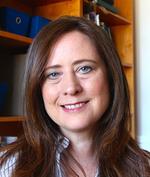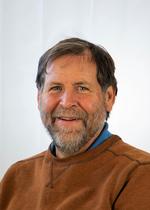Mathematical Biology
Significant interactions between mathematics and biology began at least a century ago in population dynamics models. Today, mathematical ecology and population biology represents the confluence of two great traditions, one originating with the work of Lotka and Volterra in their study of population dynamics, and a second developed by Haldane, Fisher, and Wright to study the mechanisms of inheritance.
We have similar foundational contributions from mathematics to a variety of areas in biology: Poiseuille's Law for blood flow, the Hodgkin-Huxley model for electrophysiology, the Michaelis-Menten relation for enzyme kinetics, and the Berg and Brown model for bacterial chemotaxis are just four of many possible examples.
Powerful new techniques in molecular biology, physiology, genetics, and ecology are taking biology into a much more quantitative era. As mathemticians analyze the increasing volume of data and model increasingly more intricate biological phenomenon, we are seeing more and more how mathematics is a unifying force in biology.
Thus modern biology is calling upon a team of experts in order to continue to keep pace with the vast array of quantity information from the field and from the laboratory. Today, mathematicians with expertise as diverse as non-linear partial differential equations, dynamical systems, probability, statisitics and stochastic processes, combinatorial mathematics, graphs and networks, and low dimensional topology are engaged in this broad endeavor.
Members
Pedro Aceves Sanchez
Member of the Graduate Faculty
Jim Michael Cushing
Christopher Henderson
Member of the Graduate Faculty
Joceline C Lega
Member of the Graduate Faculty
Professor, BIO5 Institute
Professor, Mathematics
Professor, Public Health
Kevin Lin
Associate Professor, Cognitive Science - GIDP
Associate Professor, Neuroscience - GIDP
Associate Professor, Statistics-GIDP
Member of the Graduate Faculty
Professor
Laura Miller
Professor, Biomedical Engineering
Professor, Mathematics
Timothy Secomb
Professor, Applied Mathematics - GIDP
Professor, BIO5 Institute
Professor, Biomedical Engineering
Professor, Mathematics
Professor, Physiological Sciences - GIDP
Professor, Physiology
Patrick Shipman
Professor, Mathematics
Michael Tabor
Joe Watkins
Member of the Graduate Faculty
Professor, Applied Mathematics - GIDP
Professor, BIO5 Institute
Professor, Genetics - GIDP
Professor, Mathematics
Professor, Public Health
Professor, Statistics-GIDP










